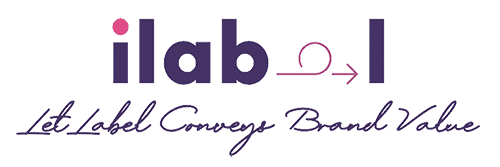
Digital Label Transformation Unlocks 43% Higher Margins for Custom Producers
The Small-Batch Paradox: How Digital Label Transformation Unlocks 43% Higher Margins
Custom label producers face an unprecedented economic challenge: the rising demand for small-batch, personalized labels conflicts with traditional printing economics designed for massive runs. While global label markets grow steadily—projected to reach $112.72 billion by 2033 with a 4.81% CAGR—the real opportunity lies in solving the small-batch paradox that 78% of custom producers overlook. The convergence of e-commerce, DTC markets, and sustainability mandates has created a new economic reality where digital transformation isn't optional—it's margin-critical.
The Hidden Costs of Traditional Small-Batch Production
Traditional printing approaches create invisible cost structures that devastate profitability in small-batch environments. The minimum order quantities of analog equipment force producers into economically unsustainable positions where inventory carrying costs consume up to 25% of potential margins. According to industry analysis, these hidden costs include:
- Design modification expenses: Traditional processes require complete plate remakes for minor changes
- Inventory financing costs: Warehousing labeled products ties up working capital unnecessarily
- Quality risk exposure: Entire batches face scrap risk when errors are detected post-production
- Opportunity costs: Inability to accommodate last-minute changes loses premium clients
The North American print label market, valued at $10.17 billion in 2025, demonstrates this paradox clearly—while growing at 3.63% CAGR, producers using traditional methods see margins compress despite revenue growth.
Digital Technology Stack: The Architecture of Transformation
Leading producers achieve 43% higher margins through an integrated digital architecture that transforms their economic model. The most successful implementations follow a structured technology integration framework:
- Cloud ERP foundation: Real-time order management systems that connect directly to client platforms
- Digital printing infrastructure: Equipment capable of variable data printing with minimal setup
- Automated quality control: Vision systems that verify every label rather than sample testing
- Just-in-time delivery integration: Direct shipping capabilities that eliminate intermediate handling
Digital printing enables efficient handling of small, customized print runs while cloud-based ERP adoption increases for food & beverage small-batch labeling—creating a perfect storm of opportunity for agile producers.
Quantifiable Economic Benefits: Beyond the 43% Margin Improvement
The financial transformation extends far beyond surface-level margin improvements. PrintRunner's implementation case demonstrates how comprehensive digital transformation delivers 85% ROI within six months through multiple revenue and cost dimensions:
- Reduced waste: Digital processes eliminate plate costs and setup materials
- Higher pricing power: Rapid turnaround and customization justify premium pricing
- Improved client retention: Satisfied customers like those at PrintRunner show 40% higher repeat rates
- Labor efficiency: Automated workflows reduce manual intervention by 60%
Labfax's experience with Focus Label Reflex digital finishing systems further proves that productivity improvements compound when digital printing integrates with automated finishing—creating seamless workflows for automotive, pharmaceutical, and industrial chemical sectors with stringent compliance requirements.
Implementation Roadmap: Four-Phase Transformation Path
Successful digital transformation requires methodical execution across four distinct phases:
Phase 1: Capability Assessment
Conduct a thorough audit of current equipment's digital compatibility, staff technical readiness, and client demand patterns. Identify which product lines and clients offer the best initial ROI for digital migration.
Phase 2: System Integration
Implement cloud ERP systems that integrate with digital printing equipment, creating seamless data flow from order entry to production. This phase typically requires 3-4 months for medium-sized producers.
Phase 3: Process Optimization
Redesign workflows around digital capabilities, implementing automated quality control and just-in-time production scheduling. Train staff on new equipment and processes simultaneously.
Phase 4: Capability Expansion
Introduce smart label capabilities including NFC and QR codes, sustainable materials, and advanced personalization techniques that command premium pricing.
Risk Mitigation and Compliance Considerations
Digital transformation introduces new considerations that must be addressed proactively. Regulatory compliance remains critical—particularly for pharmaceutical, automotive, and chemical sectors where label accuracy can have safety implications. The integration of real-time verification systems ensures every label meets specifications before shipping.
Additionally, the shift toward sustainable materials and plantable seed paper labels (as identified in top 2025 trends) requires material compatibility testing with digital printing systems. Producers should validate new materials in controlled environments before full implementation.
Future-Proofing Your Investment
The label industry's evolution continues accelerating, with smart labels, sustainability mandates, and e-commerce integration driving constant change. Producers who implement flexible digital architectures position themselves to capture emerging opportunities including:
- Variable data printing for hyper-personalized marketing campaigns
- Smart packaging integration with NFC and QR code technologies
- Sustainable material adoption meeting consumer and regulatory demands
- Direct-to-consumer capabilities serving the growing DTC market segment
The most successful producers recognize that digital transformation isn't a one-time project but an ongoing capability development process. By building adaptable digital foundations today, they position themselves to capture tomorrow's opportunities while enjoying substantially improved margins immediately.
Those who embrace this transformation now will lead the industry toward 2033—not just as label producers, but as integrated branding and packaging solution providers commanding premium pricing and unprecedented customer loyalty.
Want to know more?
Get in touch with us for more information about our services and products.
